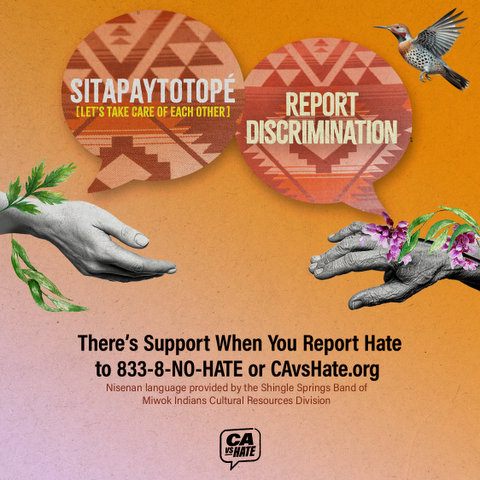
23 Nov Photographer Shows Native Americans Through a Different Lens

Britta Guerrero (San Carlos Apache), CEO of the Sacramento Native American Health Center, and photographer Matika Wilbur (Swinomish and Tulalip) of the 562 Project, during a Nov. 8 talk for CalEndow Live. (Screenshot captured by Samantha Kennedy / The CC Pulse)
By Samantha Kennedy
Matika Wilbur laughed and held back tears as she showed photos from her recently released book “Project 562: Changing the Way We See Native America.” (The number 562 refers to the number of tribes that were recognized by the federal government when the project was conceived in 2012; now, there are 574 federally recognized tribes and many others that don’t have recognition.) That laughter and resilience were elusive in what Wilbur had seen of Native Americans in the media. She wanted to shine a light on the vastness of Native America in a way she knew how: photography.
The book, Wilbur said at CalEndow Live’s Nov. 8 event at the beginning of Native American Heritage Month, is meant to “uplift the contemporary complexity of Native America’s intelligence, try to showcase the truths of our hearts.”
Wilbur is a photographer from the Swinomish and Tulalip tribes; she is an enrolled member of the latter. She sought out culturally relevant materials after her class watched a TED talk about a photographer’s portrayal of poverty on the Pine Ridge Indian Reservation. Her students cried and one died by suicide days after. She wanted Native youth to understand their beauty and power but struggled to find positive representations.
“As an artist,” she said, “I realized I needed to do better.”
Between photos from her wedding and her book, Wilbur showed a montage of how Native Americans are portrayed to the masses: the tomahawk chop at a Kansas City Chiefs football game, an ad for the Dior fragrance Sauvage with a Native American dancing, and the tribe in the Disney film “Peter Pan” — inaccurate, harmful stereotypes that don’t portray the humanity of Native Americans.
Wilbur’s journey took her to over 700 different tribes in the country to begin rectifying this image, which she refers to as narrative correction. These representations are especially harmful to young Natives.
In education, Native representation is often lacking or inaccurate. The National Congress of American Indians found in 2018 that over half of the states in the country did not mention a Native person in its K-12 curriculum. And, according to a Reclaiming Native Truth project, 78% of Americans said they “know little to nothing about Native Americans.”
If they’re represented at all, most depictions of Native Americans are pre-1900.
“The erasure is impacting the way that our youth feel about their future,” Wilbur said.
Wilbur was not the only one who wanted to change this in Indian Country. When established institutions would not fund her project, individuals rallied behind her. She raised nearly $40,000 in two weeks and almost all of it came from Natives.
And to begin the narrative correction for incoming generations, Wilbur’s tribe bought her book for every young person in the community. Young Natives could see people who looked and lived like them.
Wilbur shared story after story alongside the photos, detailing the joys and complexities of Native America’s lives. She always managed to laugh and smile through the stories.
“I fell in love over and over again,” she said of meeting person after person. Wilbur likened the feeling to a concept of love among the Mohawk people, saying it is like looking at a newborn “because there’s something so precious for new life.”
“That kind of love carried me through the journey.”
Some stories showed the hope she wanted to instill in young Natives.
The story of Leon Grant, who was a member of the Omaha tribe, showed Wilbur the lengths he went to go to college and eventually open the Phoenix Indian Center in 1947. Grant, according to Wilbur’s retelling, walked for 49 days to go to college. He would go on to theology school and law school.
Other stories gave a glimpse into the lighthearted moments that are often disregarded in favor of, as Wilbur puts it, “poverty porn.”
Wilbur’s story of Greg Biskakone Johnson, an Anishinaabe tribal member, and her collecting rice while on a canoe led her to embrace the activity and sing.
“The rice likes when you’re quiet,” she recalled Johnson telling her. Then, as she remembered washing worms out of her hair that night, she laughed some more.
More can be learned about Project 562 on its website.






No Comments